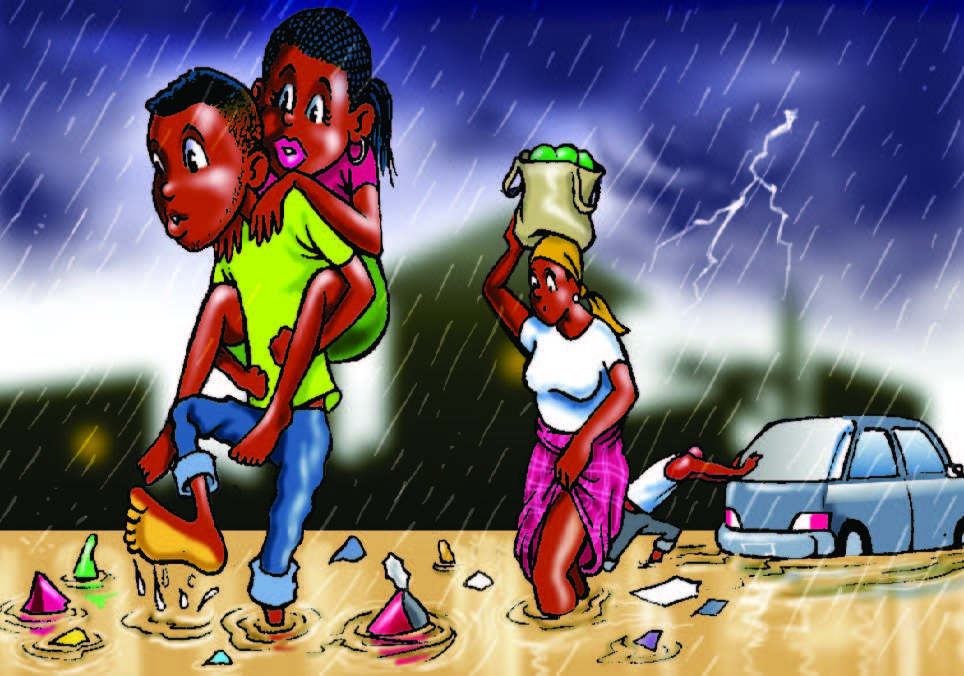Latest Headlines
CONFRONTING THE RAGE OF NATURE

All the stakeholders should take NiMet’s predictions seriously
Floods are among the most frequent and costly natural disasters in terms of human hardship and economic loss. While the annual seasonal climate prediction report by the Nigerian Meteorological Agency (NiMet) provides critical information to help guide decision-making across all sectors of the economy, most Nigerians hardly pay attention until disaster occurs. It is therefore no surprise that flooding has in recent years caused untold damage in several communities across the country. No fewer than four persons were recenty swept away by flood at a community in Nnewi North Local Government Area of Anambra State. There have been similar such reports in other states.
The Federal Ministry of Water Resources and Sanitation and the Nigeria Hydrological Services Agency (NIHSA) have identified 31 states as high-risk areas for significant flood impact in 2024. According to the Minister, Joseph Utserv, some of these states have already started experiencing varying levels of flooding and its associated disasters, adding that most of the flood incidents were flash/urban floods resulting from high rainfall intensities of long duration and poor and blocked drainage systems.
To tackle the challenge, the federal government has recommended measures to include but not limited to educating citizens to imbibe attitudinal change towards warnings for flood prevention and relocating people living along the waterways and those that are having socio-economic activities on the flood plains, by authorities at all levels. States and local governments, according to the government, are encouraged to desilt river channels and canals and to create buffer (or detention basins) in their respective constituencies to collect runoff waters. They are also expected to modify settlements to withstand floods by putting up flood barriers, and “effective and efficient operational procedure for dams and reservoirs and maintenance of other hydraulic and water infrastructure across the country”. Construction of dykes, flood-walls, buffer dams detention basins and water retaining structures are also helpful.
As already predicted by NiMeT, there is more rain to come that will lead to the release of water from the Oyan River Dam in Abeokuta North local government area of Ogun State and from the Lagdo dam in Cameroon, which on account of its location on the Benue River, in the Niger basin, floods Nigeria on its way to the Atlantic Ocean. Authorities in the 36 states therefore have enough time to prepare adequate measures against the elements to avert another tragedy. Blocked drains, especially in areas where flood waters easily accumulate and generate a strong force, should be cleared, and subsequently kept free. These and other measures must be taken to minimize our individual and collective vulnerability.
Another challenge which stakeholders should reflect upon concerns reducing the alarming post-harvest losses in the agricultural sector. According to an assessment conducted by the National Agricultural Extension and Research Liaison Services (NAERLS), Ahmadu Bello University, Zaria, an estimated N700 billion in economic value was lost to damages caused by the 2022 floods in the agricultural-related sector. This includes the loss of 8.4 million tonnes of 14 crop varieties output, valued at N384.4 billion, the loss of N100.2 billion worth of fish and over N93.04 billion in the livestock sector.
These losses that traditionally occur during the peak of the rainy season are detrimental to the country’s economy. It is one thing to have bumper harvest during the rainy season, but it is another thing to have the capacity to preserve the harvest for immediate gains of the farmers during the high demand for food that follows the dry season. The focus should therefore be on pre-emptive intervention.

















